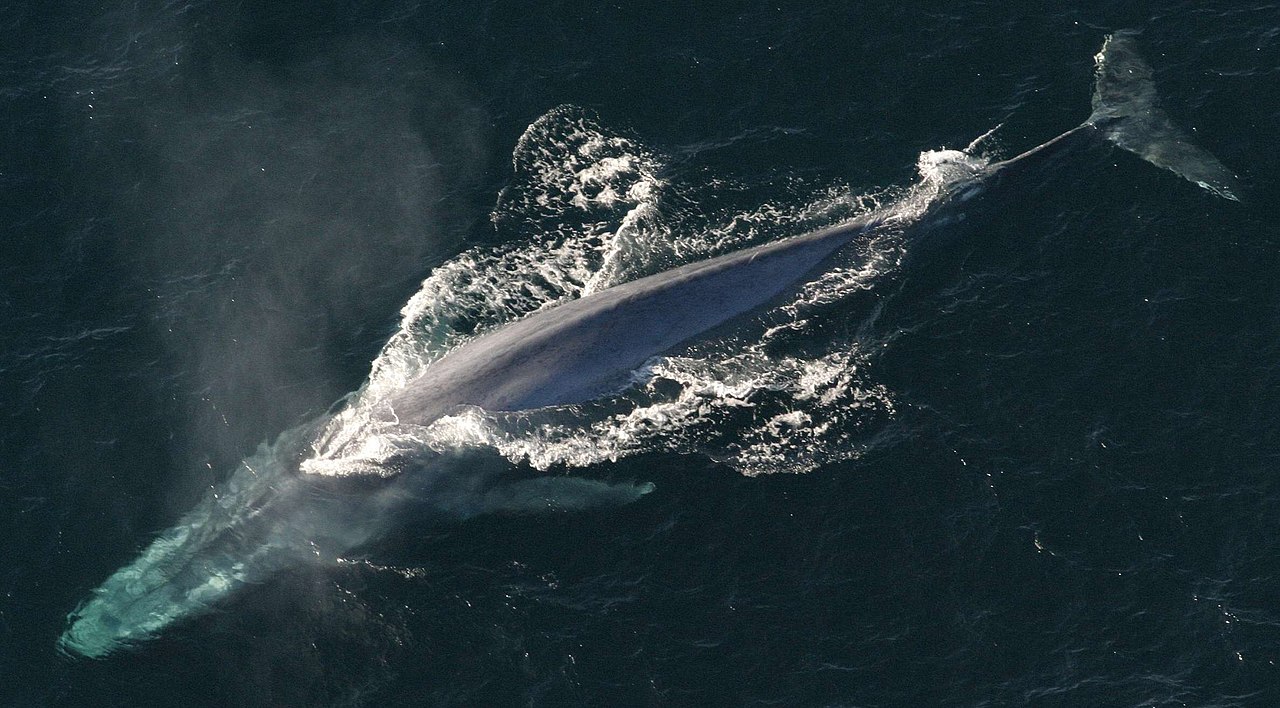

The Blue whale (Balaenoptera musculus) can reach 30 meters in length, or almost 10 meters longer than a bus (photo: NOAA Photo Library)
Some species of cetacean are up to 4 meters in length, while others reach 30 meters. According to researchers at the State University of Campinas, genes that favor the colossal growth of these mammals also inhibit the development of cancer.
Some species of cetacean are up to 4 meters in length, while others reach 30 meters. According to researchers at the State University of Campinas, genes that favor the colossal growth of these mammals also inhibit the development of cancer.

The Blue whale (Balaenoptera musculus) can reach 30 meters in length, or almost 10 meters longer than a bus (photo: NOAA Photo Library)
By André Julião | Agência FAPESP – The functioning of certain regions of a few genes in cetaceans (whales, porpoises and dolphins) may explain why the Blue whale (Balaenoptera musculus) can reach lengths of up to 30 meters – almost 10 m more than a bus – while the Bottlenose dolphin (Tursiops truncatus) is 4 m long at most. It can also help toward the development of new cancer treatments.
This is the subject of an article published in the journal BMC Ecology and Evolution by a group of researchers at the State University of Campinas Institute of Biology (IB-UNICAMP) in São Paulo state, Brazil.
“Although cetaceans are divided into two well-defined evolutionary groups, Odontoceti [dolphins and toothed whales] and Mysticeti [baleen whales that have no teeth and filter zooplankton through keratin bristles, including blue whales and humpback whales, for example], we found in the promoter region of the gene NCAPG a division between those with lengths of more or less than 10 m – giants and non-giants,” said Felipe Silva, first author of the article.
The promoter region of a gene is a DNA sequence located upstream of the protein-coding region where the messenger RNA that intermediates protein synthesis is produced. It begins the process of transcription, in which an RNA copy of a gene’s DNA sequence is made. As such, it acts as a regulator of gene expression.
Analysis of the NCAPG promoter region, which can make the gene express more protein or inhibit protein production, showed that the sperm whale (Physeter catodon), which has teeth and averages 20 m in length, is closest to the Mysticeti, which are over 10 m long and have no teeth. It also grouped the Common minke whale (Balaenoptera acutorostrata), which averages 8.8 m, with non-giant toothed cetaceans.
“Our findings don’t change the group’s evolutionary tree but constitute new evidence that giant size has a genomic basis. The analysis of other genes confirms the evolutionarily established groups, meaning that the characteristics of minke whales and sperm whales are probably convergent adaptations – similar traits that evolve independently in separate groups via different routes,” said Mariana Freitas Nery, a professor at IB-UNICAMP and supervisor of Silva’s research for his master’s degree.
The study was part of the project “Using comparative genomics to understand convergent evolution of mammals: tracking the molecular footprints of marine and riverine environment colonization”, led by Nery and supported by FAPESP.
Suppression of cancer
The researchers focused on four genes explored in a previous study, in which they analyzed alterations to gene coding regions. Here the investigation focused on regulatory regions for the same genes. Non-coding sequences with regulatory functions, such as promoters and enhancers, coordinate the spatiotemporal expression of genes.
The analysis showed that these regions influenced not only the size of the animals but also their ability to suppress cancer. Tumors would be expected in animals with such a large number of cells, yet cancer is extremely rare in cetaceans.
“It was important to analyze the coding and non-coding portions of these cetaceans’ genomes since both proved significant for these traits, which evolved very rapidly in these animals, as the analysis also showed,” Silva said.
While the proteins that regulate body size were found to be more active in giant cetaceans, the same genes proved to be inhibitors in those with lengths under 10 m, acting as if they were brakes on the size of members of the group.
Not by accident, some of the genes whose activity characterizes gigantism in cetaceans are also tumor suppressors. Parts of other mammals’ genomes also play this role, offsetting the influence of having a large number of cells, which subjects them to replication flaws and would otherwise make them more likely to develop cancer.
“Humans also have these genes, so it would be interesting to find out more about how they suppress the formation of tumors in these animals. Such knowledge could help develop future cancer treatments via activation or inhibition of specific regions of the genome, for example,” Nery said.
The article “Patterns of enrichment and acceleration in evolutionary rates of promoters suggest a role of regulatory regions in cetacean gigantism” is at: bmcecolevol.biomedcentral.com/articles/10.1186/s12862-023-02171-5.
Republish
The Agency FAPESP licenses news via Creative Commons (CC-BY-NC-ND) so that they can be republished free of charge and in a simple way by other digital or printed vehicles. Agência FAPESP must be credited as the source of the content being republished and the name of the reporter (if any) must be attributed. Using the HMTL button below allows compliance with these rules, detailed in Digital Republishing Policy FAPESP.





